Growing up with a German Shepherd and now a proud parent to two Labradors, I’ve always been captivated by large dog breeds. Their loyal demeanor and striking presence have a unique way of filling a home with love and security. So, when I first encountered a Giant Alaskan Malamute, it was an unforgettable experience. I remember the gentle giant ambling towards me, its sheer size and strength exuding a calm confidence. Despite its imposing stature, the dog displayed incredible gentleness – a trait characteristic of the breed.
In this article, we’ll explore the origins, temperament, and the special care Giant Alaskan Malamutes require. We’ll also bust some common myths and provide insights into what makes these dogs such incredible companions. Whether you’re a potential owner or simply a dog enthusiast, this piece aims to provide a comprehensive understanding of these magnificent creatures.
TABLE OF CONTENTS
- Giant Alaskan Malamute Quick Summary
- Giant Alaskan Malamute Breed Origins
- Physical Characteristics of the Giant Alaskan Malamute
- Giant Alaskan Malamute Puppies
- Alaskan Malamute Temperament
- Taking Care of a Giant Alaskan Malamute
- Giant Alaskan Malamute Health Issues
- FAQs on Giant Alaskan Malamutes
- The True Gentle Giants
Giant Alaskan Malamute Quick Summary
Giant Alaskan Malamute Breed Origins
From Adobe Stock
My fascination with large dog breeds led me to uncover the rich history of the Giant Alaskan Malamute, a story steeped in both utility and companionship. It’s believed that in the 1700s, early settlers in Alaska first encountered these robust dogs. Intrigued by their size and strength, breeders began a selective breeding program. They chose the largest puppies from standard Malamute litters, aiming to create a line that significantly surpassed the breed’s standard weight of 100 pounds.
This selective breeding eventually led to what we now know as the Giant Alaskan Malamute. Classified as ‘giant’ when they weigh over 150 pounds and stand taller than 30 inches, these dogs have a rich history as powerful workhorses, adept at pulling heavy sleds across challenging winter terrains. They are natural fits for winter sports like bikejoring and skijoring, showcasing their versatility beyond mere companionship.
Their history is intertwined with that of the Inuit people, who used these dogs for hauling large game and as vital components in their daily survival. Their strength and resilience made them invaluable during Alaska’s Gold Rush in 1896, where they were used to transport heavy loads of gold.
While Giant Alaskan Malamutes were not bred for racing, they contributed to the development of racing breeds like Huskies. Their role in history is further highlighted by their involvement in the Serum Runs to Nome, which is often associated with the famous story of Balto, although Malamutes were part of many such life-saving teams.
Contrary to popular belief, Giant Alaskan Malamutes are not just large, lazy dogs. Their considerable heft is a result of selective breeding for strength and endurance, necessary for hauling heavy loads. They are bred to cover distances, needing ample exercise to maintain their health and happiness.
While some might think that their size makes them unsuitable for families, with the right training, socialization, and a defined role, they can indeed become good family pets. However, their needs and temperament make them less ideal for first-time dog owners or those living in confined spaces like apartments. Malamutes require an experienced hand due to their strong-willed nature and need for space to roam.
Physical Characteristics of the Giant Alaskan Malamute
In my experience with large dog breeds, the physical characteristics of the Giant Alaskan Malamute are both impressive and distinctive.
Height and Weight
The Giant Alaskan Malamute is a towering breed, often tipping the scales between 150 and 200 pounds. In my observations, males generally stand taller than females, reaching up to 30 inches. This substantial size is a defining feature of the breed.
From my experience, it’s this sheer mass that often leaves a lasting impression. Their growth is rapid, and distinguishing them from their standard-sized counterparts in puppyhood can be challenging. It’s their eventual size that truly sets them apart, making them one of the largest northern breeds.
Size
The size of the Giant Alaskan Malamute is what initially piqued my interest. They are indeed ‘giant’, as their name suggests. What I find fascinating is that, despite their enormous size, they maintain the breed’s characteristic wolf-like appearance. Their thick, shaggy coats contribute to this imposing look. In my time around these dogs, their size has always been the most striking aspect, setting them apart from their standard-sized relatives and other large breeds.
Coat and Color
The coat of the Giant Alaskan Malamute is something I’ve always admired. They have a long, thick double coat: a dense, wooly undercoat coupled with a coarser outer coat that’s about an inch long. This double layering is a crucial adaptation to the harsh Alaskan winters. The coat is incredibly dense, providing insulation against extreme cold. As with many long-haired breeds, Giant Alaskan Malamutes require regular grooming.
They shed extensively and, during their biannual coat ‘blowing’ periods, daily brushing becomes essential. In terms of color, these dogs exhibit a diverse palette, including black, seal, sable, gray, red, or chocolate. The white markings on their legs, stomach, and face are distinct and reminiscent of those commonly seen in Siberian Huskies. Unlike their standard-sized siblings, Giant Malamutes rarely have blue eyes, typically featuring dark brown or amber eyes instead.
Giant Alaskan Malamute Puppies
From Adobe Stock
Most people interested in these puppies first fall in love with their adorable fluffy appearance.
Not many people actively breed Giant Alaskan Malamutes because their standard-sized siblings are already a large breed.
Occasionally, a standard-sized Malamute can produce a giant puppy in their litter. However, these puppies are very rare so it can be difficult to find a reputable breeder.
Because this breed is rare and expensive it is important to avoid puppy mills or irresponsible breeders. Never purchase from a pet store as they are often stocked by puppy mills:
- Good breeders will focus on one or two breeds while puppy mills tend to have three or more breeds.
- Irresponsible breeders will charge more based on their size and color.
How Much is a Giant Alaskan Malamute?
The price of these puppies can range from $2,000 to $3,000. More expensive dogs will come from health-checked parents and working bloodlines.
There are typically four to eight puppies in each litter. A good breeder should be able to match you and a puppy based on temperament and lifestyle.
Never take home a puppy before eight weeks of age. Puppies should already have their first vet check and vaccinations before going to their forever home.
When you meet the litter it is important to note how healthy the puppies are. They should be bright-eyed and lively. The puppies should be in a large whelping area that is clean with plenty of stimulating toys.
Giant Alaskan Malamute puppies grow fast but don’t reach their full size until nearly three years of age. It is important to make sure that nothing puts extra strain on their joints during their growing phase. You need to keep long walks to a minimum and don’t encourage your puppy to do too much jumping. This can cause lifelong joint issues.
Where to Adopt
It is rare to find this dog in a shelter. There are no organizations dedicated to the rescue of giant variations specifically. However, you can try the Moonsong Malamute Rescue or the Alaskan Malamute Assistance League.
Because the Giant Alaskan Malamute exceeds the maximum weight in the breed standard of 85 pounds, they are not recognized by any kennel clubs. Standard-sized versions are recognized by the American Kennel Club and United Kennel Club. They are classified in the working breed group.
Alaskan Malamute Temperament
From Adobe Stock
I’ve noticed that these dogs exhibit a unique blend of traits that mirror their working heritage and strong-willed nature. They are protective, always on the lookout for any potential threat to their loved ones. It makes them excellent watchdogs, though it’s important to manage them properly to avoid overprotectiveness.
Giant Alaskan Malamutes are known for their friendly and playful nature with family members, often displaying a joyful disposition during family activities. However, their energetic and sometimes stubborn personality requires consistent training and socialization.
As a working breed, Giant Alaskan Malamutes have an innate desire for physical activity. I’ve seen many of these dogs excel in activities like skijoring, where they joyfully pull their owners through snow-covered landscapes. They are also great canine camping buddies, making them perfect for nature lovers. They also have a strong prey drive, inherited from their hunting background with the Inuit tribes. This aspect of their nature means they might not be the best fit for homes with small animals or livestock.
Their independent temperament can sometimes be mistaken for aloofness, especially with strangers or unfamiliar dogs. While they are not inherently aggressive, they can be standoffish and may react protectively if they perceive a threat to their territory or family. Early socialization is key to helping them become well-adjusted adults.
In terms of their vocal nature, Giant Alaskan Malamutes are indeed not quiet. Their tendency to howl and bark, a trait common in many Nordic breeds, serves as an alert system to any unusual activities or people approaching. This vocalization can be charming but also challenging, especially in residential neighborhoods.
Are They Good Family Dogs?
It is unfair to compare this breed to dogs such as Labradors. However, they can still make a good family dog. They do well with young children and teenagers. However, due to their large size, they must be closely supervised.
Further, this breed cannot live in a family with other small pets but they do well with other dogs. They are used to living in a pack and do not do well being the only dog in a household.
They are protective of their house and can be aggressive with unfamiliar people, animals, or sounds.
Taking Care of a Giant Alaskan Malamute
From Adobe Stock
These magnificent dogs, with their unique traits and needs, require specific care and attention. In the following section, I will share insights and tips on how to best care for a Giant Alaskan Malamute.
Feeding
These large dogs have a robust appetite, matching their size. It’s important to feed them a balanced diet that supports their energy levels and health. I’ve found that a diet rich in proteins and fats, with the right balance of carbohydrates, vitamins, and minerals, works best. Remember, because of their size, their nutritional requirements will be significantly more than smaller breeds.
Choose the Right Food
Selecting the right food for a Giant Alaskan Malamute can be a bit overwhelming, but I’ve learned a few things along the way. High-quality commercial dog food that’s formulated for large breeds is usually a good choice. These foods are specifically designed to support the joint health and energy requirements of large dogs. I also advise checking the protein and fat content; a higher protein content is generally beneficial for these active dogs.
Portion Control and Feeding Schedule
Overfeeding a Giant Alaskan Malamute can lead to obesity, which can exacerbate joint problems. I recommend following the feeding guide on the dog food package as a starting point, and then adjust as needed based on the dog’s activity level and weight. Feeding them twice a day, instead of one large meal, helps in better digestion and energy management.
Treats
Like any dog, Giant Alaskan Malamutes enjoy treats. However, I always remind owners to use treats sparingly. Treats should not make up more than 10% of their daily calorie intake.
Monitoring Weight and Health
Regularly monitoring the weight and overall health of your Giant Alaskan Malamute is essential. Due to their size, they can be prone to obesity, which can lead to serious health issues. I always encourage owners to have regular vet check-ups to ensure their diet is supporting their health needs and to make adjustments as necessary.
Training and Exercise
This breed requires physical activity, mental challenges and social interactions to thrive. Below are some insights.
Training
These intelligent dogs respond well to positive reinforcement methods. In my experience, rewards like treats and praise make training sessions more effective. I start with basic obedience training early on and maintain a regular training schedule. It’s crucial to establish yourself as the pack leader, given their independent nature. Additionally, consistent reinforcement of commands and rules is essential, as inconsistency can lead to confusion and unwanted behaviors. On top of that, I always emphasize the need for regular, structured training sessions to reinforce discipline and good behavior.
Exercise
- Daily Time Requirement: 120 minutes
- Intensity Level: 5
- Favorite Exercise: Running
I’ve found that a combination of activities works best. Daily exercise, ideally one to two hours, is a must. This can include long walks, hikes, or play sessions. Given their sled-pulling heritage, activities like skijoring or pulling exercises are not just physically stimulating but also satisfying for them. I ensure their exercise routine is consistent and varied, keeping in mind their endurance and strength. It’s important to adjust the intensity and duration of exercise based on their age, health, and energy levels.
Socialization
Socialization is a critical aspect of raising a well-rounded Giant Alaskan Malamute. I’ve observed their reserved nature around strangers and other dogs. Hence, early and continuous exposure to different people, animals, and environments is vital. You can take them to dog parks, arrange playdates, and expose them to various social situations. Proper socialization helps mitigate their protective instincts and aids in developing a friendly and approachable demeanor. It’s a gradual process, requiring patience and persistence, but immensely rewarding when you see them becoming well-adjusted and sociable dogs.
Mental Stimulation
I suggest using puzzle toys, training sessions that include new tricks, and games like hide-and-seek with their toys for mental exercise. Such activities prevent boredom and related destructive behaviors. Keeping their minds active not only enhances their learning abilities but also strengthens the bond between you and them.
Giant Alaskan Malamute Health Issues
From Adobe Stock
Below, we look at the most common health concerns for this breed, explaining their symptoms and causes.
Hip and Elbow Dysplasia
Hip and elbow dysplasia are common in Giant Alaskan Malamutes. This condition, a malformation of the hip or elbow joint, can lead to pain, lameness, and arthritis. From my observations, symptoms often include difficulty in rising, reluctance to jump or run, and a noticeable change in gait. The causes are largely genetic, though factors like improper weight and rapid growth can exacerbate the condition. Regular check-ups and X-rays can help in early detection. While surgery is an option, managing the condition with weight control, appropriate exercise, and pain relief is often the preferred approach.
Progressive Retinal Atrophy (PRA)
Progressive Retinal Atrophy is another health issue in Giant Malamutes, leading to gradual vision loss. In my time with dogs, I’ve learned that early symptoms can be subtle, like night blindness or dilated pupils. Over time, it progresses to full blindness. PRA is genetic, and while there’s no cure, affected dogs can often adapt well to their limited vision, especially if their environment remains consistent. Regular eye exams are key to early detection, and while it can be heartbreaking to see a dog’s vision deteriorate, with care and adaptation, they can still lead a full life.
Hypothyroidism
Hypothyroidism, a condition where the thyroid gland doesn’t produce enough hormones, is something I’ve come across in Giant Malamutes. It can lead to issues like lethargy, weight gain, coat problems, and in some cases, epilepsy. Symptoms to watch for include changes in energy levels, weight, and skin and coat quality. The cause is usually genetic, and diagnosis is through blood tests. Treatment involves daily medication to regulate hormone levels. With proper management, dogs with hypothyroidism can lead normal, healthy lives.
Von Willebrand Disease
Von Willebrand disease, a blood clotting disorder, is less common but can be serious in Giant Malamutes. It can lead to excessive bleeding from minor injuries or during surgery. Symptoms might include prolonged bleeding, nosebleeds, or blood in the stool. The cause is genetic, and while there’s no cure, it can be managed with care during surgical procedures and in avoiding injuries. Knowing your dog’s status through genetic testing is vital, especially before any surgery.
FAQs on Giant Alaskan Malamutes
What is the average lifespan of a Giant Alaskan Malamute?
Giant Alaskan Malamutes typically live between 8 to 12 years. Like many large breeds, their lifespan is slightly shorter compared to smaller dogs. Providing a healthy diet, regular exercise, and consistent veterinary care can help ensure they live a full and happy life.
How much exercise does a Giant Alaskan Malamute need?
Giant Alaskan Malamutes require significant daily exercise, ideally one to two hours. Their exercise routine should include activities like long walks, hikes, and play sessions. Due to their working dog heritage, they also enjoy pulling activities, such as skijoring, especially in snowy conditions.
Are Giant Alaskan Malamutes good family pets?
Yes, Giant Alaskan Malamutes can be excellent family pets with the right training and socialization. They are known for being loyal and protective of their family. However, due to their size and strength, supervision is recommended around small children. They are best suited for families with experience in handling large breeds.
Do Giant Alaskan Malamutes shed a lot?
Yes, Giant Alaskan Malamutes are heavy shedders. They have a thick double coat that sheds throughout the year, with increased shedding twice a year during their shedding season. Regular brushing, at least a few times a week, is necessary to manage their shedding.
Are Giant Alaskan Malamutes easy to train?
Giant Alaskan Malamutes are intelligent but can be stubborn, which may pose a challenge in training. Consistent, patient training with positive reinforcement from an early age is key. They respond well to rewards and praise, but they require an owner who can establish themselves as a firm, gentle leader.
Can Giant Alaskan Malamutes live in hot climates?
While they can adapt to various environments, Giant Alaskan Malamutes prefer cooler climates due to their thick coats. In hotter climates, it’s important to provide them with ample shade, air conditioning, and fresh water. Exercise should be limited during the hottest parts of the day to prevent overheating.
What are common health issues in Giant Alaskan Malamutes?
Common health issues include hip and elbow dysplasia, progressive retinal atrophy, hypothyroidism, and von Willebrand disease. Regular veterinary check-ups, along with awareness of these conditions, can help in early detection and management.
The True Gentle Giants
I can confidently say that these dogs are a remarkable blend of strength, loyalty, and affection. Their majestic presence and steadfast devotion make them integral members of the family. The ideal environment for a Giant Alaskan Malamute is with an owner who not only appreciates their physical and mental needs but also embraces the challenges and joys that come with them.
If you’re considering this breed, it’s essential to introspect whether your lifestyle can accommodate their exercise demands and grooming needs. These dogs thrive with owners who are as enthusiastic about outdoor activities as they are and who understand the commitment required to manage their shedding and independent nature.
Yes, their size and exercise requirements can be daunting, and their shedding and stubbornness might test your patience. But if you’re someone who finds joy in long hikes, doesn’t mind a bit of fur around the house, and appreciates a dog with a strong personality, the Giant Alaskan Malamute could indeed be the perfect fit for you.
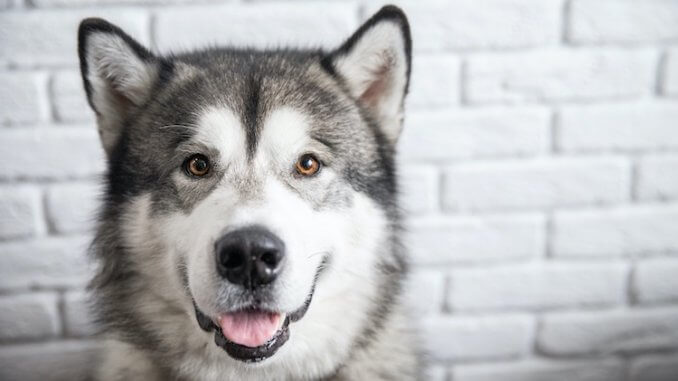
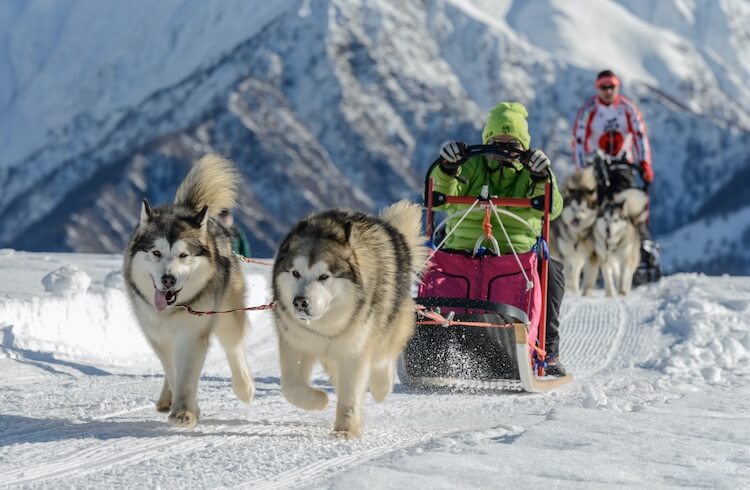
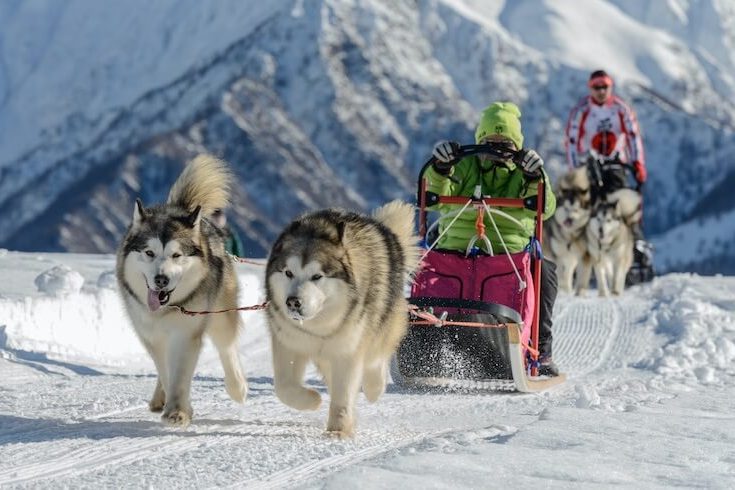
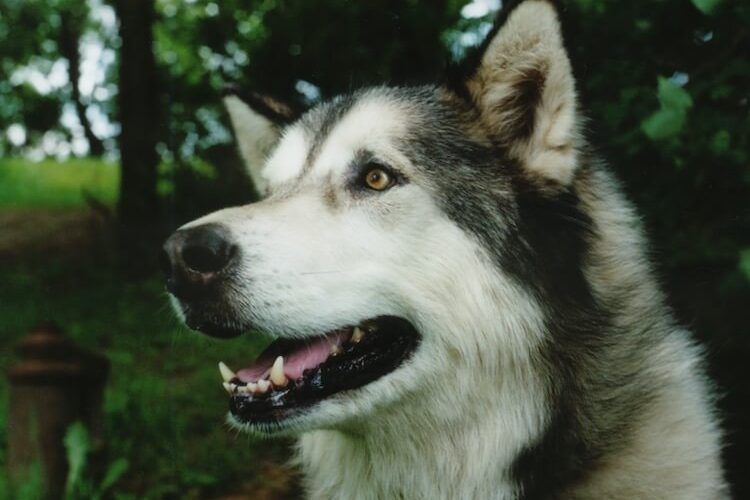
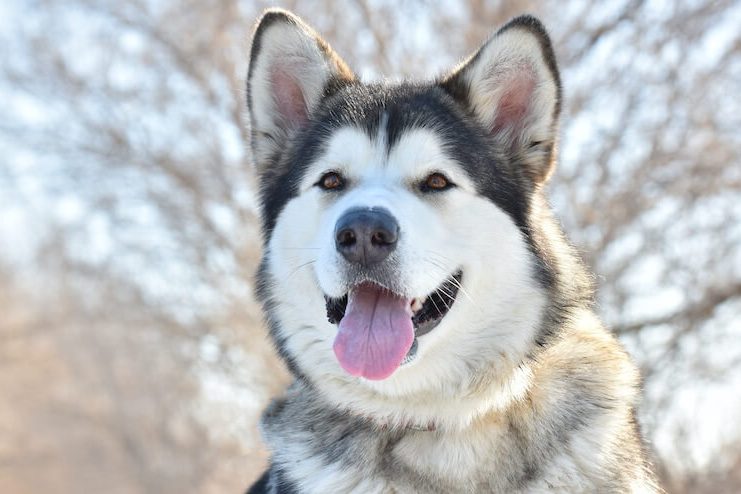
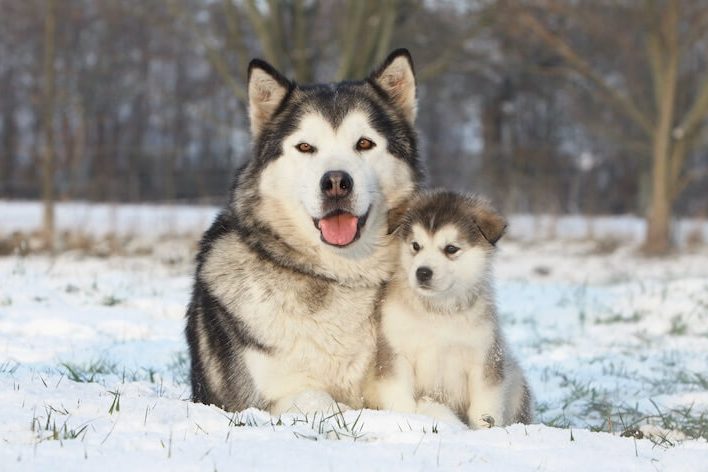
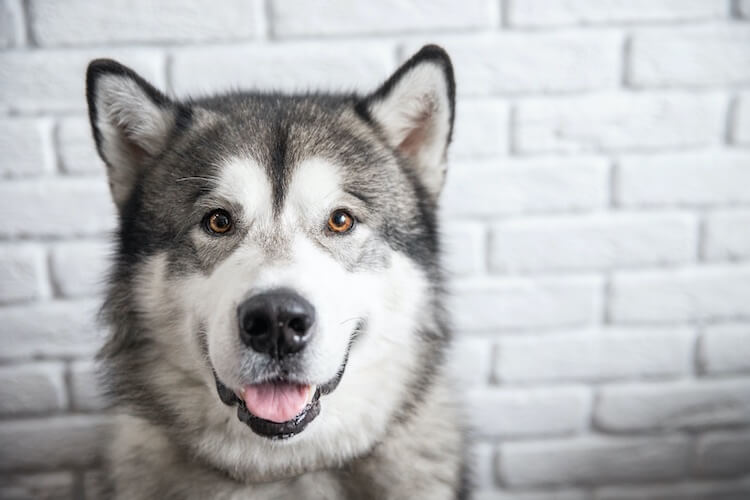
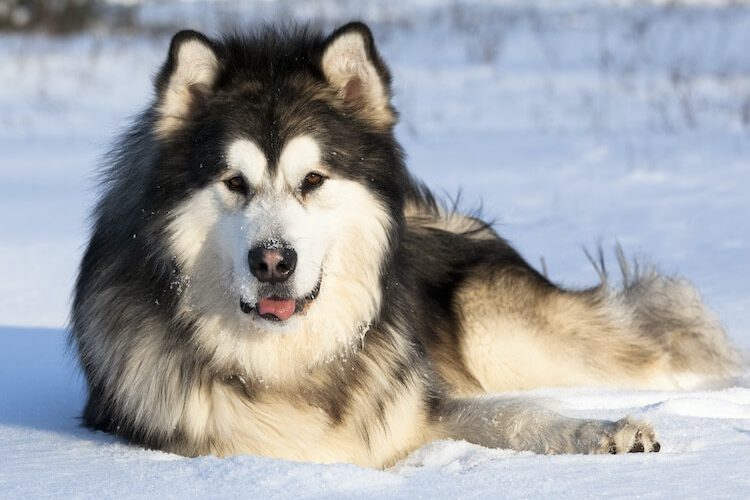
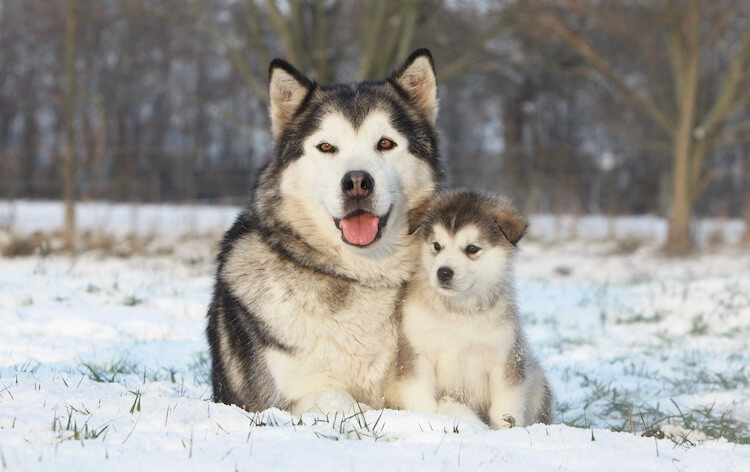
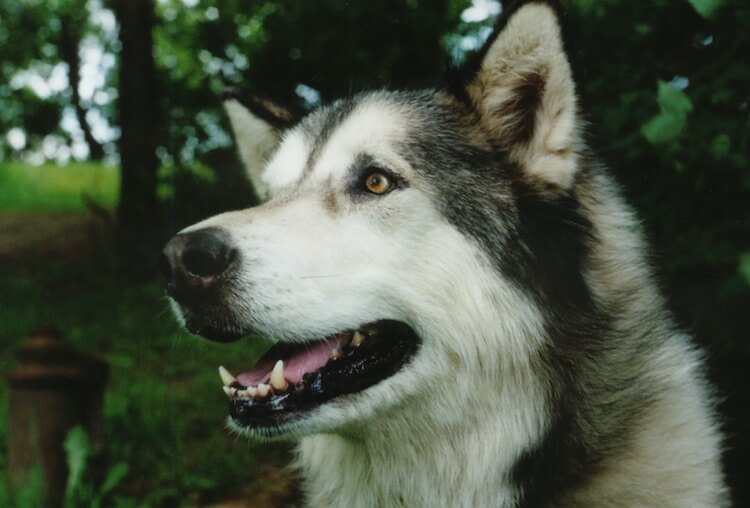
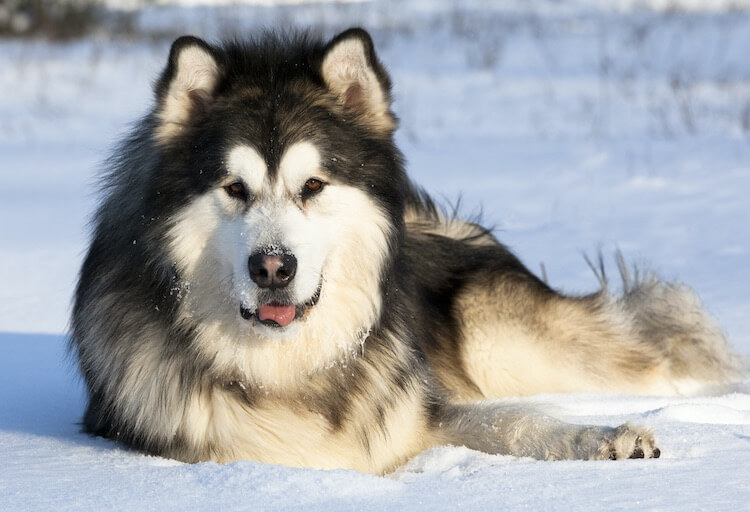
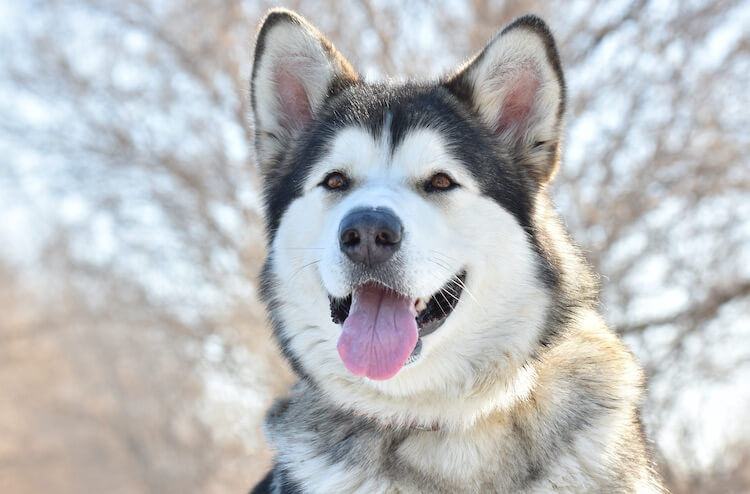

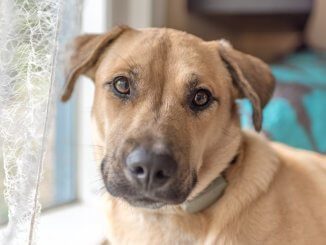


I’m interested soley in the giant malamute. I need to find this pup as close to Johnstown Pa.as possible. There are ao many breeders but, I do not want a standard sized malamute. Where and who sells the mammoth sized pups for sure? I have space and love enough for 2. Like I said before, Im looking for a really big baby.Hope to hear back..
I once bought a Giant Malamute (169 lb. Male – Taiga’s Burnumwood Mighty Kqwinn). He was the greatest dog I have ever had the honor to love. I bought him from the McCormack’s in Butler PA… not sure what the kennel name is now. The McCormack’s are VERY respected in the Malamute community. Kqwinn was a once in a lifetime dog… If they are still breeding Mals I couldn’t recommend a better kennel .
We just have a 2 and a half year female. She is a 140 pounds we have a 55 pound siberian as well. They are best buddies and never apart. We are with them 24/7 and they need that much supervision. What a joy.they are 3 days apart in age so it is just perfect match.
want to by 2 different color puppies giant malamut direct from breeder.
Cansomeone guide me to the breder?
My baby Freddie is about 110 pounds and just past 11 months old. We love him but like the article says be very careful with cats and small kids. He loves our little girl but is like a bull in a China shop. Great breed, very stubborn but rewarding
Looking for anyone who can help me locate “McCormick’s–in Butler, Pa” I understand they are breeders of Alaskan Malamutes; I’m interested in purchasing a ‘large’ puppy. We had one and he passed away after 13-years. He was family.
Thank you
Joe